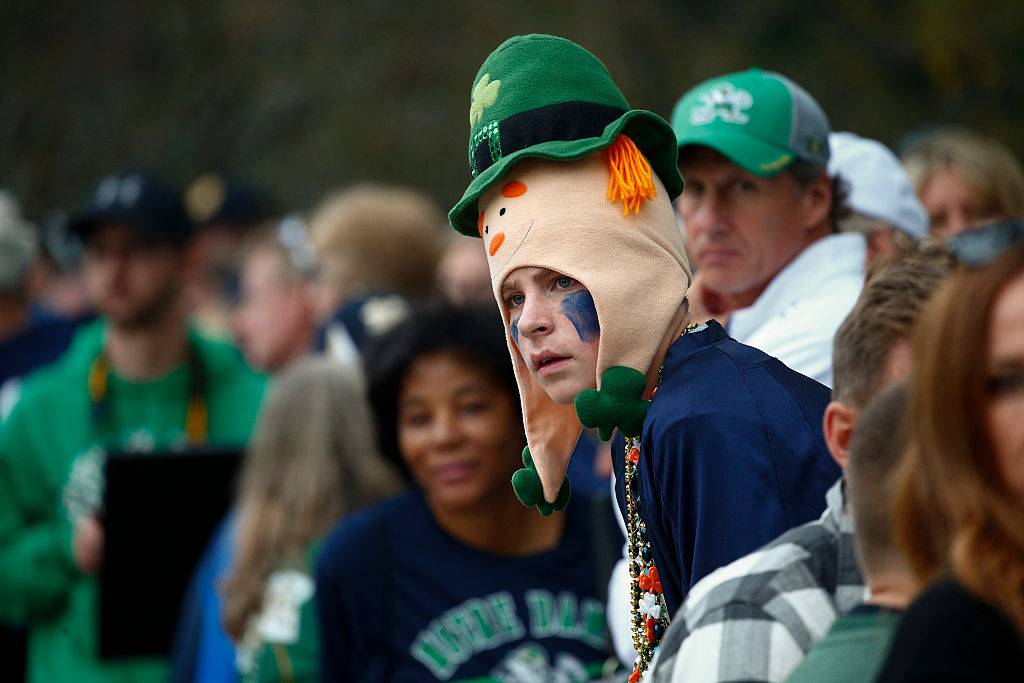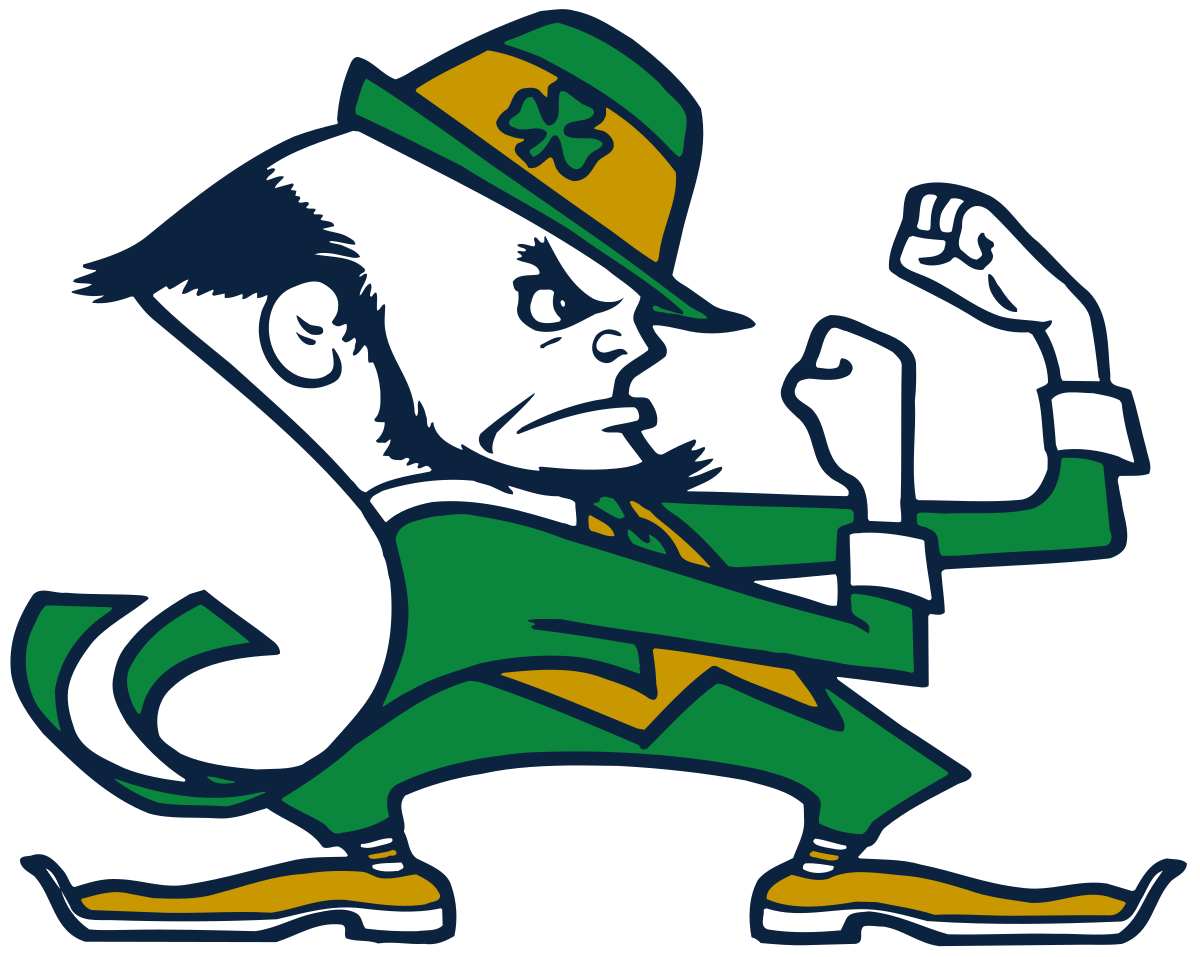NOTRE DAME University has issued a strong rebuttal of the recent criticism of its American football team’s continued use of the nickname of the “fighting Irish”.
In a statement provided to the Irish Post, the University also defended its continued use of a leprechaun as the team’s main mascot.
The Fighting Irish moniker came under the microscope after Washington’s NFL franchise announced it was ditching the teams “Redskins” nickname - a term long considered a slur against Native Americans.
In the wake of the furore, one Irish-American Notre Dame fan and writer accused the University of encouraging “negative portrayal of Catholics and immigrants” with its use of the “Fighting Irish” name.
Dave Hannigan in the Irish Times also hit out at the team’s logo and its depiction of a leprechaun with "fists raised, hat askew and chin curtain beard”.
He argued that the logo was "a replica of the simian-featured caricatures deployed by Punch magazine when mocking the Irish throughout the 19th century."
Notre Dame University has resoundingly rejected both claims, however, pointing to the history behind the nickname as the chief reason for its continued use.
“Notre Dame’s nickname – Fighting Irish – began as a term of derision directed against the university’s athletic teams,” they explained.
 SOUTH BEND, IN - OCTOBER 29: A Notre Dame Fighting Irish fan is seen before the game against the Miami Hurricanes at Notre Dame Stadium on October 29, 2016 in South Bend, Indiana. Notre Dame defeated Miami 30-27. (Photo by Michael Hickey/Getty Images)
SOUTH BEND, IN - OCTOBER 29: A Notre Dame Fighting Irish fan is seen before the game against the Miami Hurricanes at Notre Dame Stadium on October 29, 2016 in South Bend, Indiana. Notre Dame defeated Miami 30-27. (Photo by Michael Hickey/Getty Images)“One reported use of the phrase came in 1899 when Northwestern University students chanted, “Kill the fighting Irish” during a football game. At the time, anti-Catholicism and anti-immigrant sentiments were openly expressed in the United States and, since Notre Dame was largely populated by ethnic Catholics – mostly Irish, but also Germans, Italians and Poles – the University was a natural target for ethnic slurs.
“When the Notre Dame football team gained national prominence in the first three decades of the 20th century, journalists of the day, especially New York Daily News columnist Francis Wallace, a Notre Dame alumnus, began to popularize the “fighting Irish” tag in their stories.
“Soon, Notre Dame supporters took it up, turning what once was an epithet into an “in-your-face” expression of triumph. The University had no official nickname at the time, but as Fighting Irish, Catholics and Ramblers were variously applied to it in the press and public, Notre Dame’s president, Father Matthew Walsh (an Irishman), officially adopted Fighting Irish in 1927.”
They also rejected any suggestion of playing to stereotypes with the continued use of a leprechaun as the team’s mascot.
“The leprechaun, of course, is symbolic of the Fighting Irish and intentionally a caricature. It also originated – in England – as a derisive symbol of Irish people, which Irish-Americans – including those at Notre Dame – again have turned back on former oppressors as a sign of celebration and triumph,” they explained.
“In both the upraised fists of the leprechaun mascot and the use of the word “fighting,” the intent is to recognize the determination of the Irish people and, symbolically, the university’s athletes.”

Notre Dame also rejected any attempt at drawing a parallel between their use of the nickname and logo and the situation involving Washington’s NFL franchise.
“There is no comparison between Notre Dame’s nickname and the stereotypical images of Black people used by several corporations, or the Indian and warrior names used by other organizations, such as the Washington Redskins,” they said.
“None of these companies or institutions were founded or named by Black people or Native Americans who sought to highlight their heritage by using names and symbols associated with their culture or heritage.
“At Notre Dame, however, the Irish have been an integral part of the institution since the beginning and, as noted, played a principal role in actually adopting the name.
“Four of the seven religious who joined Rev. Edward Sorin, C.S.C., in the founding of the University in 1842 were Irish-born. In addition, Notre Dame students and faculty were overwhelmingly Irish throughout the University’s first 100 years, and the representation remains strong today.
“In fact, we have more students studying the Irish language at Notre Dame than anywhere outside of Ireland itself, and we have what is widely recognized as the pre-eminent Irish studies program in the U.S. It also is worthy of note that 15 of Notre Dame’s 17 presidents have been of Irish descent.”
The university’s statement concluded: “Unlike companies or organizations that have expropriated others' cultures, our symbols stand as celebratory representations of a genuine Irish heritage at Notre Dame, a heritage that we regard with respect, loyalty and affection.”

